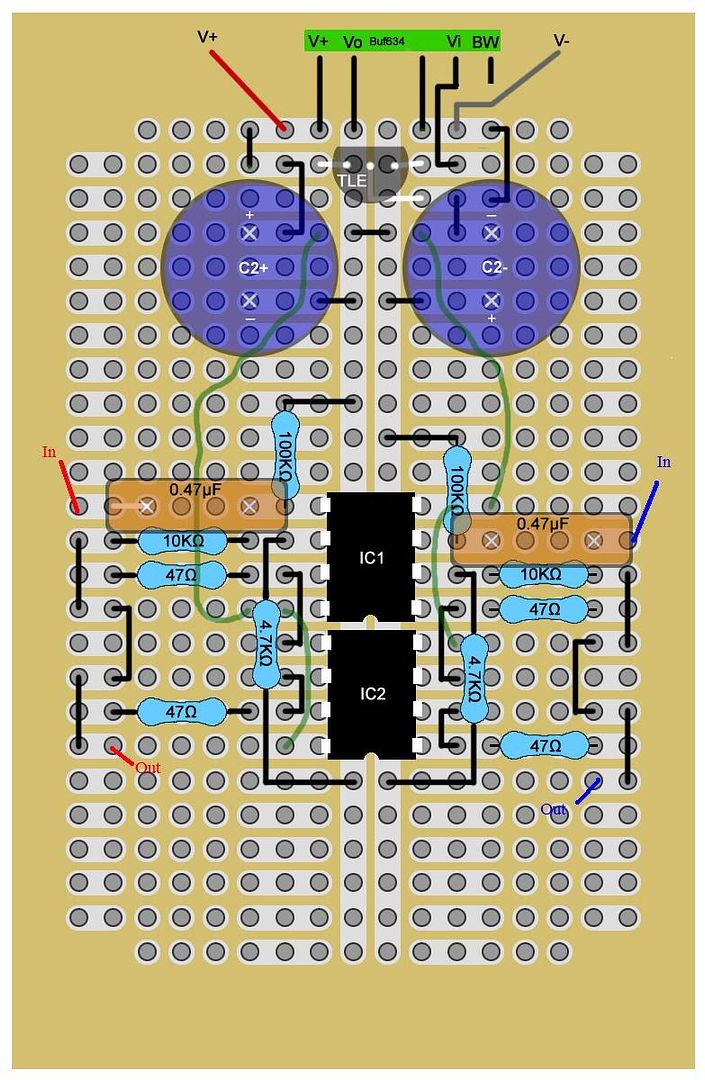UnknownAX
100+ Head-Fier
- Joined
- Feb 25, 2013
- Posts
- 144
- Likes
- 14
I want to build a cmoy á Tangentsoft. To be honest, my headphones don't even need it, but I still want to make one. It'll be my first cmoy so I won't do anything special, proper sq would be nice though. I'll be using 0.6w metal film resistors, opa2132pa and a stripboard.
1. What gain should I use for 40-60ohm headphones?
2. Is there any point at using big capacitors rated for high voltages, does it improve sound? (220uf,50v electrolytic and 100nf,1600v film cap's)
3.Is there any point at using audio grade caps and pots in a cmoy?
4.How can I tweak frequency response of the cmoy? Different size caps?
1. What gain should I use for 40-60ohm headphones?
2. Is there any point at using big capacitors rated for high voltages, does it improve sound? (220uf,50v electrolytic and 100nf,1600v film cap's)
3.Is there any point at using audio grade caps and pots in a cmoy?
4.How can I tweak frequency response of the cmoy? Different size caps?





